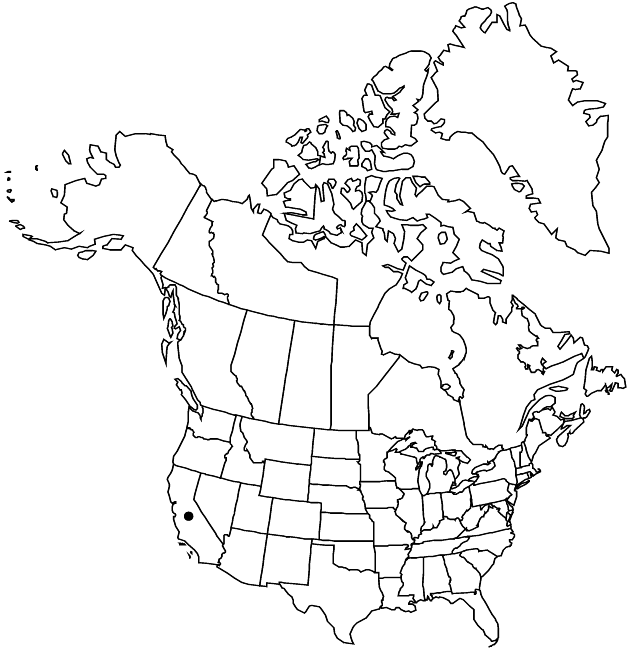Difference between revisions of "Pulicaria paludosa"
Neues J. Bot. 1(3): 142. 1806.
Common names: Spanish false fleabane
Synonyms: Pulicaria hispanica (Boissier) Boissier
Treatment appears in FNA Volume 19. Treatment on page 472.
FNA>Volume Importer |
FNA>Volume Importer |
||
| Line 12: | Line 12: | ||
|name=Pulicaria hispanica | |name=Pulicaria hispanica | ||
|authority=(Boissier) Boissier | |authority=(Boissier) Boissier | ||
| + | |rank=species | ||
}} | }} | ||
|hierarchy=Asteraceae;Asteraceae tribe Inuleae;Pulicaria;Pulicaria paludosa | |hierarchy=Asteraceae;Asteraceae tribe Inuleae;Pulicaria;Pulicaria paludosa | ||
| Line 29: | Line 30: | ||
|discussion=<p><i>Pulicaria paludosa</i> was first recognized as a naturalized weed in southern California in the early 1960s (P. H. Raven 1963b); it had been collected earlier by P. A. Munz (in 1946).</p> | |discussion=<p><i>Pulicaria paludosa</i> was first recognized as a naturalized weed in southern California in the early 1960s (P. H. Raven 1963b); it had been collected earlier by P. A. Munz (in 1946).</p> | ||
|tables= | |tables= | ||
| − | |references= | + | |references= |
| − | |||
| − | |||
| − | |||
}}<!-- | }}<!-- | ||
| Line 39: | Line 37: | ||
-->{{#Taxon: | -->{{#Taxon: | ||
name=Pulicaria paludosa | name=Pulicaria paludosa | ||
| − | |||
|authority=Link | |authority=Link | ||
|rank=species | |rank=species | ||
| Line 51: | Line 48: | ||
|distribution=Calif.;Europe (Portugal;Spain). | |distribution=Calif.;Europe (Portugal;Spain). | ||
|introduced=true | |introduced=true | ||
| − | |reference= | + | |reference=None |
|publication title=Neues J. Bot. | |publication title=Neues J. Bot. | ||
|publication year=1806 | |publication year=1806 | ||
|special status= | |special status= | ||
| − | |source xml=https://jpend@bitbucket.org/aafc-mbb/fna-data-curation.git/src/ | + | |source xml=https://jpend@bitbucket.org/aafc-mbb/fna-data-curation.git/src/eaa6e58056e40c9ef614d8f47aea294977a1a5e9/coarse_grained_fna_xml/V19-20-21/V19_790.xml |
|tribe=Asteraceae tribe Inuleae | |tribe=Asteraceae tribe Inuleae | ||
|genus=Pulicaria | |genus=Pulicaria | ||
Revision as of 19:21, 16 December 2019
Annuals (biennials, or short-lived perennials), (5–)20–120 cm. Leaf blades oblong to narrowly oblanceolate, 1–3 cm × 2–7 mm, bases clasping, margins entire, ± revolute. Phyllaries lance-linear to linear, 3–5 mm, pilosulous. Ray florets (10–)20–30+; corolla laminae 1.5–2+ mm. Disc florets (9–)40–100+; corollas 2–3 mm. Cypselae 0.8–1 mm, ± hirsutulous; pappi: outer cups 0.1–0.2(–0.4) mm, inner 12–20+ bristles 2–3 mm. 2n = 18 (Spain).
Phenology: Flowering Jul–Oct.
Habitat: Roadways, dry streambeds, seasonal wetlands
Elevation: 30–600 m
Distribution

Calif., Europe (Portugal, Spain).
Discussion
Pulicaria paludosa was first recognized as a naturalized weed in southern California in the early 1960s (P. H. Raven 1963b); it had been collected earlier by P. A. Munz (in 1946).
Selected References
None.
Lower Taxa
None.
